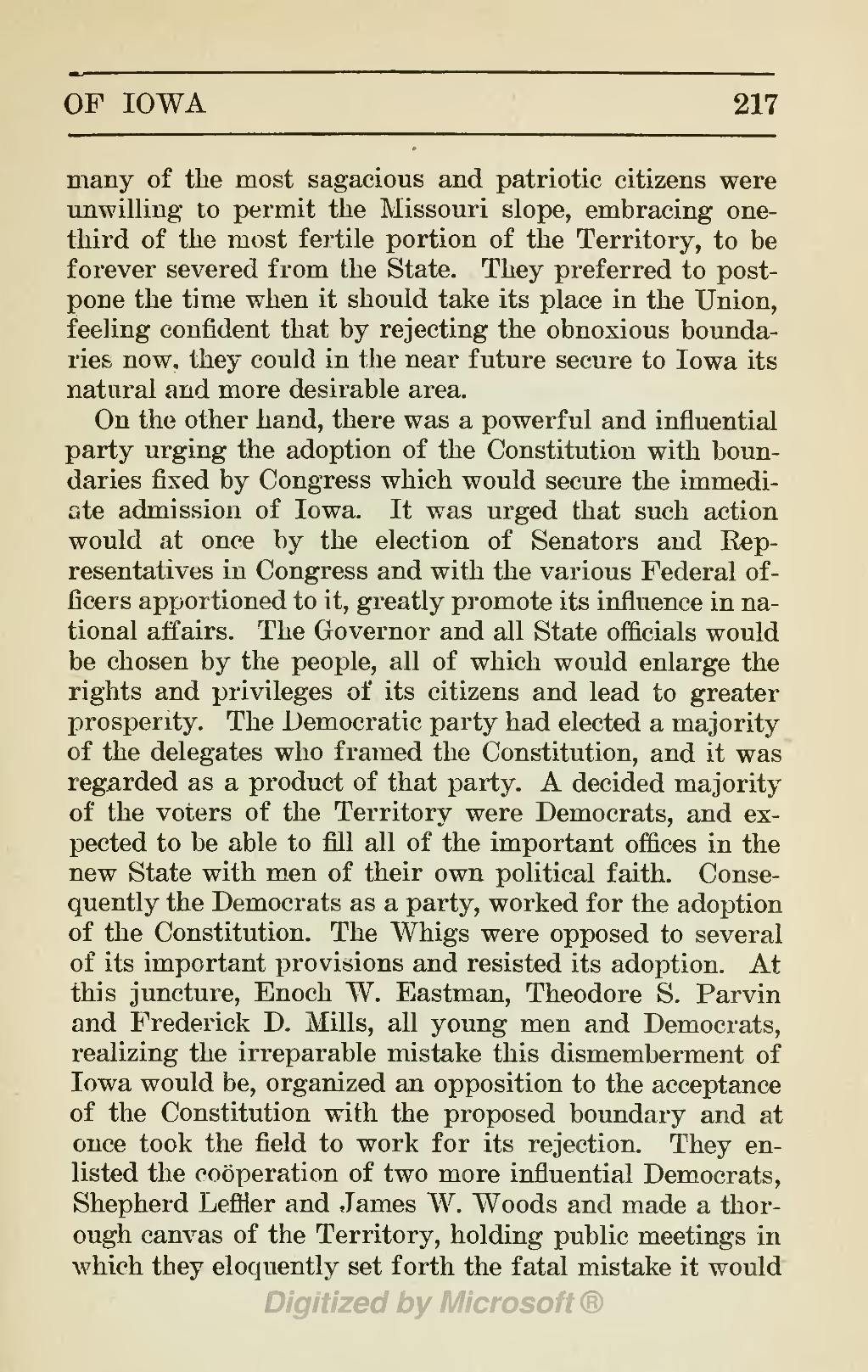| OF IOWA | 217 |
many of the most sagacious and patriotic citizens were unwilling to permit the Missouri slope, embracing one-third of the most fertile portion of the Territory, to be forever severed from the State. They preferred to postpone the time when it should take its place in the Union, feeling confident that by rejecting the obnoxious boundaries now, they could in the near future secure to Iowa its natural and more desirable area.
On the other hand, there was a powerful and influential party urging the adoption of the Constitution with boundaries fixed by Congress which would secure the immediate admission of Iowa. It was urged that such action would at once by the election of Senators and Representatives in Congress and with the various Federal officers apportioned to it, greatly promote its influence in national affairs. The Governor and all State officials would be chosen by the people, all of which would enlarge the rights and privileges of its citizens and lead to greater prosperity. The Democratic party had elected a majority of the delegates who framed the Constitution, and it was regarded as a product of that party. A decided majority of the voters of the Territory were Democrats, and expected to be able to fill all of the important offices in the new State with men of their own political faith. Consequently the Democrats as a party, worked for the adoption of the Constitution. The Whigs were opposed to several of its important provisions and resisted its adoption. At this juncture, Enoch W. Eastman, Theodore S. Parvin and Frederick D. Mills, all young men and Democrats, realizing the irreparable mistake this dismemberment of Iowa would be, organized an opposition to the acceptance of the Constitution with the proposed boundary and at once took the field to work for its rejection. They enlisted the cooperation of two more influential Democrats, Shepherd Leffler and James W. Woods and made a thorough canvas of the Territory, holding public meetings in which they eloquently set forth the fatal mistake it would
